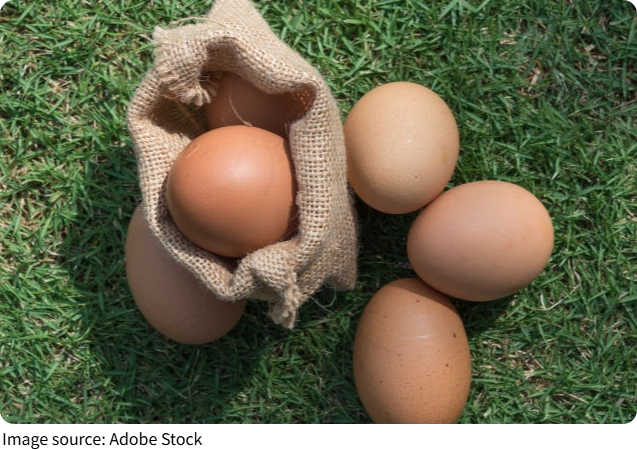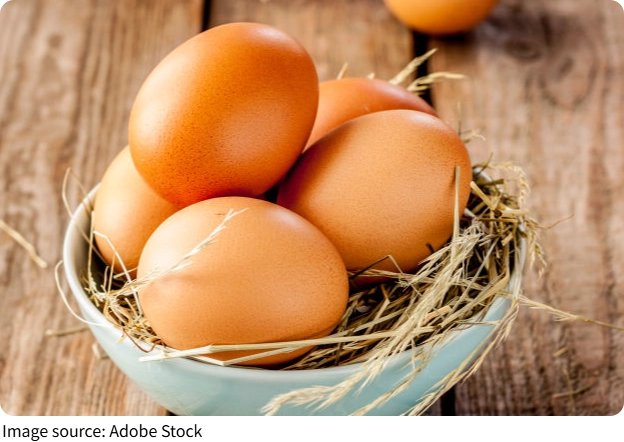Cooking an Egg

Ever watched a raw, runny egg turn into a firm, white-and-yellow delicacy in hot water and wondered—what exactly is going on?
Let's explore into the chemistry of cooking an egg and reveal the fascinating science behind your morning breakfast.
Proteins: The Main Players
Proteins are the stars of the show when it comes to what happens inside an egg during cooking. In raw eggs, the proteins (like ovalbumin in the white and lipovitellin in the yolk) are long, folded chains of amino acids. These chains are held in specific shapes by weak chemical bonds.
When you cook an egg, heat begins to break those weak bonds. This process is called denaturation. The proteins unfold and start to tangle with each other, forming a web-like structure. This web traps water and gives cooked eggs their solid texture.
From Clear to White: Why Egg Whites Change Color
Raw egg whites are clear because the protein molecules are tightly coiled and don't reflect much light. As heat unravels these proteins and they interact, they form a network that scatters light, turning the transparent liquid into a white, opaque gel. This transformation usually begins around 60°C (140°F) and finishes around 80°C (176°F).
Interestingly, this is why chefs recommend gentle cooking for eggs—too much heat makes the protein network too tight, forcing out water and making the egg rubbery.
The Yolky Chemistry
Egg yolks contain not only proteins but also fats, vitamins, and minerals. Their cooking process is a bit more complex. The proteins in yolks denature and coagulate at slightly higher temperatures than those in egg whites—usually around 65–70°C (149–158°F). That's why soft-boiled eggs can have set whites but still creamy yolks.
In some cases, overcooking a yolk leads to a greenish-gray ring around it. This isn't harmful—just a result of iron in the yolk reacting with hydrogen sulfide from the white, forming ferrous sulfide.
Why Boiled Eggs Become Firm
The firmness of a boiled egg isn't because the liquid is drying out or evaporating. Instead, it's due to the formation of the protein network we mentioned. The water in the egg is still there—it's just trapped in a mesh of solid proteins. That's why eggs stay juicy and firm at the same time.
This concept is a great example of gelation, a common process in food science where proteins or carbohydrates form a gel-like structure.
Timing Matters: Soft vs. Hard Boiled
Cooking time plays a huge role in the final texture.
• A soft-boiled egg, cooked for about 4–6 minutes, has a tender white and runny yolk.
• A medium-boiled egg, around 7–9 minutes, has a slightly firm white and creamy yolk.
• A hard-boiled egg, cooked 10 minutes or more, has both fully set white and yolk.
Precision is key, and that's why culinary scientists often use timers and thermometers when dealing with eggs!
What About Poached or Fried Eggs?
Poaching or frying eggs uses the same principles, but the environment is different. In poaching, water transfers heat gently. In frying, oil allows higher temperatures. Either way, proteins still denature and coagulate—but because heat reaches the egg unevenly in a pan, the edges may cook faster and crisp up, especially in fried eggs.
The Role of Acids and Salts
Adding vinegar to poaching water helps keep egg whites together by lowering the pH. Acid speeds up coagulation of proteins. Similarly, adding salt to boiling water doesn't affect the boiling point much but can slightly change how proteins behave, especially if you're aiming for that perfect peel.
How to Peel an Egg Easily
Ever struggled peeling a boiled egg? That's usually because the pH inside a very fresh egg is low, making the membrane stick to the shell. After a few days in the fridge, eggs become slightly more alkaline and easier to peel. You can also explore and roll the egg gently to loosen the shell evenly.
Is It Safe to Eat Runny Yolks?
Most eggs sold commercially are pasteurized or come from safe, monitored sources. Still, undercooked eggs may carry the risk of bacterial contamination. Experts like the US Food and Drug Administration (FDA) recommend cooking egg dishes to at least 71°C (160°F) to ensure safety, especially for vulnerable individuals.
Cooking Eggs: More Than Breakfast
Eggs are used in baking, sauces, and even some beverages. Their ability to thicken, bind, and emulsify is thanks to the chemistry of their proteins. In mayonnaise, for instance, lecithin in the yolk helps mix oil and water—another magic trick from the humble egg!
From Kitchen to Lab: Eggs in Science
Eggs aren't just food—they're also used in labs to study protein chemistry. The ease with which egg proteins denature makes them perfect teaching tools in biology and chemistry classes. They even help explain basic biochemistry principles!
Final Thoughts
Next time you boil or fry an egg, remember: you're performing a small but amazing chemistry experiment. From denatured proteins to gel formation, each change tells a story of how heat transforms matter.

Have you ever noticed a difference between eggs cooked in different ways or temperatures? Try experimenting with your breakfast and see the science in action. You might just start looking at your morning eggs in a whole new light!
-
 If Earth Stopped SpinningWhat Would Happen If Earth Stopped Spinning?
If Earth Stopped SpinningWhat Would Happen If Earth Stopped Spinning? -
 Space's Ultimate DistortersBlack holes are cosmic sculptors—bending space, distorting time, and pulling even light into their mysterious dance.
Space's Ultimate DistortersBlack holes are cosmic sculptors—bending space, distorting time, and pulling even light into their mysterious dance. -
 Living on MarsSure, Mars Sounds Cool—But Between Radiation and Isolation, It’s a Brutal Place to Live
Living on MarsSure, Mars Sounds Cool—But Between Radiation and Isolation, It’s a Brutal Place to Live